What’s in Your Rope Quiver?
Back when I started climbing, choosing a rope was pretty simple. You usually went with an 11mm, maybe a 10.5 if you were feeling feisty. 60m ropes were really cutting edge, and 70’s weren’t even a twinkle in someone’s eye. These days, there’s a huge range of options out there, with all manner of diameters and lengths, each catering to a specific aspect of the sport. 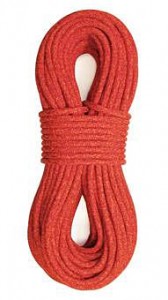 Here’s what’s in our quiver:
Here’s what’s in our quiver:
Sterling Ion2, 9.4mm, 60m
This is the Lamborghini of our rope quiver, it’s sleek, fast and get’s the job done. With a low impact force and good dynamic elongation, it gives a wonderfully soft catch when you peel off your latest project. Since most climbs around us are doable with a 60m, we rarely run into issues with length when out cragging. (It doesn’t come with us to the Creek, but we have other options for that.) Given that it’s a skinnier cord, we definitely baby it a bit. It didn’t come on the last trip to City of Rocks, where one session of top roping can grate the rope badly and leave you with instant fuzzies. For steep rock however, it’s our favorite, and the new GriGri2 handles the smaller diameter like a champ.
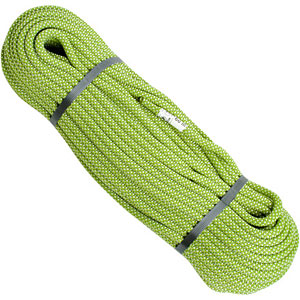 Mammut Climax, 9.6mm, 70m
Mammut Climax, 9.6mm, 70m
This one is currently holding the title of all-around all-star. Mammut launched the Climax this year, looking to offer a quality cord that didn’t break the bank. At $189.95 for a 70m (and $169.95 for a 60m!), you’ll be hard pressed to find a better value out there. We’ve been using ours since March, and despite being a “cheaper” rope, it’s held up really well on everything from desert cragging to multipitch outings. This is our rope of choice at the Creek, where a 70m is often essential, and anything thicker starts to feel like a cable every time you pull up slack to clip when you are 100 feet off the deck. We’re guessing it’s not quite as durable as it’s more pricey brethren, but so far we have no complaints on this one and would recommend it to anyone looking to score a good rope at a great price.
 Petzl Xion, 10.1mm, 70m
Petzl Xion, 10.1mm, 70m
Once upon a time 10.1 was the skinny end of the scale, but after you spend some time climbing on 9.2 to 9.4’s, 10.1 starts to feel downright HUGE! Thus I was hesitant when I pulled this one out of the box, it felt as thick as a steel cable! Still, it was fairly supple in hand, and once at the crag any misconceptions about it faded away. The extra weight is negligible on pitches without drag, and it clips quite easily. On our recent trip to City of Rocks, it was nice having a beefy cord that could stand up to the abuse of top roping over the abrasive granite. I’m still going to take the skinnier cords out most of the time, but when I want something stout that still feels nimble, the Xion is the ticket. Stay tuned for more on this one in the coming weeks.
What’s in your rope quiver?
Disclaimer: The FTC wants you to know that some of these products were provided to SplitterChoss.com for the purpose of reviewing. Like that makes a difference on how much we beat the crap out of it …
7 Responses to What’s in Your Rope Quiver?
Bulldog Creek Dog Walk (IV WI 4+)
Hayden Carpenter and Tom Bohanon recently repeated an obscure ice climb on the south side of Mt Sopris. Given a brief mention in Jack Robert’s ice guide, Bulldog Creek Walk is described as being 100 meters of WI 4. What they found was seven pitches of ice in a remote setting that makes for one […]
Connect with Us






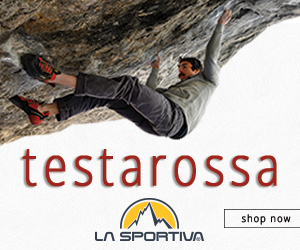

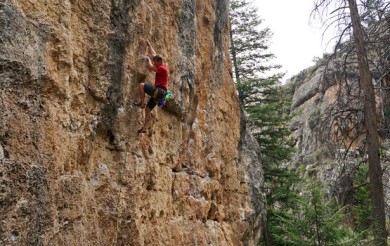
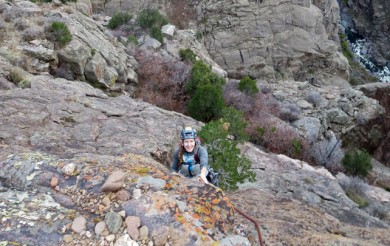
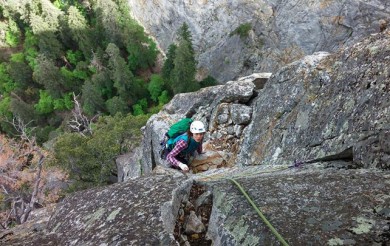
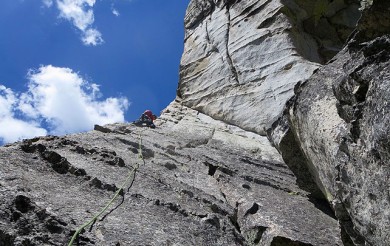



I’m a year long Mammut fan but recently discovered Sterling. Both are stellar ropes. Thanks for the feedback on the Crux….seemed a bit skeptical on the whole notion of a Mammut “value” rope.
I really love Sterling ropes. I just got a Marathon Pro (10.1) to replace my old Marathon Sport (10.4). Super durable and have nice handling. I’ve heard many bad things about Petzl ropes. I’ll be interested to hear how it holds up in the coming weeks.
Gif, this is our second Petzl rope, the Fuse was our first and I loved it. Held up great despite being skinny (9.4mm) and worked well for everything. Plus they use the ready to climb coil or whatever they call it, where the rope basically comes stacked and ready to climb on, no uncoiling shenanigans necessary!
I have both a Mammut Tusk and a Petzl Zephyr, am impressed with them both. I will be interested to see how the Xion compares to the Zephyr since it was considered to be its replacement as the Zephyr was having issues.
9.1 Beal Joker–mega light, handles great, zero durability. Just picked up a core shot after maybe 100 pitches? Sort of my fault as I did TR a little bit on it but I do expect more from a rope. Softest imaginable catch, I have caught lead falls and barely felt them there is so much spring. A TR on a long pitch can result in a 20′ rope stretch fall. I wouldn’t buy this rope again without a screaming deal because of durability and I have used friends’ 9.2 Sterling nano which lasts much longer.
9.4 Bluewater (forget model… dominator or eliminator?) Very solid rope! Has absorbed much abuse, working sport routes, toprope dogging, lots of trad, favored alpine rope since it’s a 60 and the joker is a 70. Wears well for a skinny, way light. 7lbs for a 60m.
9.8 Sterling Velocity. The all arounder. Near death now as it was the go to rope in most situations, and every trip that included leading and TRing where I needed a 70. Tahoe, Indian Creek, Potrero, the Red. Absorbed lots of toprope dog sessions, sport dog sessions, minitrax dog sessions, jugging up to replace old bolts in tahoe. Probably over 1000 pitches of abuse on this thing? Best combo of performance (read, lightish and not mega thick or stiff)to longevity I have yet found.
10.5 Maxim G60. Thick, heavy and inexpensive. I seldom use it because of the weight, 10lbs on the 60m. very thick sheath, I sometimes use it in Joshua Tree and it’s now the minitrax line since the sterling is less than 60m after a few trims. I bought it for less than $100 a few years ago to use as a hauling line but retasked it. I wouldn’t buy it again, but probably won’t need to as it will likely last another 5 years.
My quiver this past year: All of these have their specific purposes and many have seen careers in longer forms before being cut down to size. I treat my ropes well, but not to the point of washing them regularly or ultra meticulous tarp usage… I’d say that overall I have a fairly well informed perspective on the subject.
50m double ropes set – 8.5mm- Bluewater- these were originally 70s, but just not that useful for Alpine rock as 70s especially in the Alps… I’d prefer something lighter or at least more versatile as they aren’t much lighter than say a pair of Sterling Nano’s which are rated as single half and twin… Or something uber light like those new photons for ice.
30m twin 8.2mm ski rope: super skinny an older Beal rando, this doesn’t see much action other than the odd small glacier ski day.
40m half rope 8.4mm ski rope: this is my go to ski rope for glacier travel, very rarely sees anything other than snow covered glaciers.
20m Sterling Nano: gets used a twice a week, for a very specific route on a specific mountain. Overall, having this shorty rope has given me the best idea of what the Nano is capable of. I typically spend most of the time wrapping it around rock horns, cables and iron pegs for belays then it gets dragged across the snow and under careless crampons…Other skinny cords get shredded instantly (beal Joker is a Joke, mammut Serenity is in between).
40m Beal Stinger III: ie had a few of these and they tend to take a beating and get very soft and very supple- almost scarry fast, but they actually hang in there and do okay.
50m Mammut Revelation : these are solid ropes, I’ve had a few of em and they last way longer than expected. They are very very expensive and in my mind this is a serious negative.
60m Sterling Ion2 : this is my favorite rope… Long rock routes, cragging, ice climbing and some alpine time. It’s a tremendous improvement over the original Ion especially in durability, but maintains a smooth “finished ” hand.
60m Mammut Revelation: same as above, but I often find myself belaying a Revelation AND an Ion 2 and find that the Revelation, despite being marked as thinner is MUCH harder to pull through the device. (this using Atc guide or a reverso2)
60m Sterling Nano: light, supple, dynamic and durable despite it’s diameter. I use this rope most often in alpine mixed conditions or long rock climbs. This may find it’s way down to a 50m by the end of the summer.
70m Sterling Marathon Pro: I’ve had this one a while and after a long 3 years of service, I retired it by giving it to a friend for TR use… I recently saw him out at the crag and it had been pulled off the bench out back into the lead pile- I did some inspecting and the rope was in such good shape I wondered why I gave it up in the first place!?
Having used the above ropes extensively and also have substantial experience with Petzl, Maxim and Bluewater both personally and professionally, I can honestly say that Sterling Ropes are my first choice. It’s true that I’ve acquired several ropes free from the nice folks at Sterling, but I sought Sterling out exclusively because they are of the absolute best quality and THE ropes that I had consistently recommended to students and guests.
Thanks for the insight Mike. You really have to use a lot of ropes for a lot of pitches somewhat concurrently to really get a feel for how differently they behave and wear, and it looks like you do that!
I’d had good luck with a Beal in the past, the 9.7 Booster, so thought the Joker might be ok… maybe if you never ever fall or TR.
Good to hear about the Ion2, I’d heard the original Ion was junky, sort of a black eye for Sterling. The Nano and the Velocity are terrific ropes though, best in their category in my opinion. I’ll probably look for sterlings in the future, although I am a sucker for a deal on a rope and often buy based on price.